List of national parks of Benin
The nation of Benin is a sliver of a country in West Africa, the shape of which has been compared to a flaming torch. It encompasses 43,484 sqare miles (112,622 sq km), comparable to the U.S. state of Pennsylvania. Its two National Parks lie near its northern borders.
The Pendjari National Park borders Burkina Faso, while the W National Park extends into that country as well as into Niger. These two parks are part of the largest group of protected areas in West Africa, the complex of Park W-Arli-Pendjari, which straddles the borders of Niger, Benin and Burkina Faso. This complex covers a total area of 19,305 square miles (50,000 sq km), of which 4,633 sq mi (12,000 sq km) is in Benin. This is the second largest protected ecosystem in West Africa; only the Comoe National Park in Ivory Coast is comparable in size.
The area these parks lie in is considered one of the most important humid ecosystems, with extensive biodiversity, in the sub-Sahelian area of West Africa. The area is characterized by gallery forests, savannah and swampy meadows, alluvial plains, ponds, rivers, and dense dry forests within floodplains. Animal life, including big game-animals, is abundant. Pendjari is especially known for its birdlife.
The establishment of the protected areas in Benin is a positive act of man fulfilling his responsibility for the protection of the natural world.
Pendjari National Park
The Pendjari National Park (French: Parc National de la Pandjari) was initially classified as a National Forest and partial Wildlife Reserve on December 13, 1954. In May of 1961 it became a National Park, acquiring the status of Biosphere Reserve in June 1986. It was listed as a Ramsar Site in February 2007.[1] The names Pendjari National Park and Pendjari Biosphere Reserve are used interchangeably.
The Park lies in northwestern Benin, against the international frontier with Burkina Faso. It is part of the largest group of protected areas in West Africa, the complex of Park W-Arli-Pendjari. This complex straddles the borders of Niger, Benin and Burkina Faso. The Park W-Arli-Pendjari Complex covers a total area of 19,305 square miles (50,000 sq km), of which 4,633 sq mi (12,000 sq km) is in Benin. Pendjari National Park covers approximately one tenth of the complex (1930 sq mi or 5000 sq km).
Named for the Pendjari River, the national park is known for its wildlife, including monkeys, hippopotami, and a prominence of birds. There are also large stocks of game animals including elephants, lions, leopards, buffalo and various antelopes.
The quartzite cliffs of the Atacora Hills form the southeastern boundary of the park. The Pendjari River bounds the park on three sides and forms the international border with Burkina Faso along the park's northern edge. The hills and cliffs of the Atacora range make the northwest one the most scenic areas of Benin. They provide a wonderful backdrop to the Park, which, in its isolation, remains one of the most interesting in West Africa. The rocky cliffs of the area are sparsely wooded with Burkea africana, Detarium microcarpum, Lannea acida, Sterculia setigera and Combretum ghasalense. On the deep soils of some of the summits and the Atakora escarpment one finds a greater variety of plant species with Isoberlina doka and Afzelia africana. The Pendjari River has an impressive gallery forest. The park includes both Sudan and Northern Guinea savannas, with areas of grassland dominated by Acacia sieberiana and Mitragyna inermis or Terminalia macropter.
Birdlife
The Park is renowned for its abundance of birds with some 300 different species in total. Pallid Harrier (Circus macrourus) and Lesser Kestrel (Falco naumanni) are occasionally recorded and there are a few isolated records for Lappet-faced Vulture (Torgos tracheliotus). Fox Kestrel (Falco alopex) is not uncommon, while the African Swallow-tailed Kite (Chelictinia riocourii) is a not uncommon dry season visitor. The Booted Eagle (Hieraaetus pennatus) has also been recorded here. BirdLife notes that "the Pendjari is notable for large conspicuous species such as African Openbill Stork (Anastomus lamelligerus), Abdim's Stork (Ciconia abdimii), Saddle-billed Stork (Ephippiorhynchus senegalensis), and seasonally, flocks of up to 60 European White Stork (Ciconia ciconia). The African Fish Eagle (Haliaeetus vocifer) and Pel's Fishing-owl (Scotopelia peli) can also be found."
Among the more notable species recorded are Pied-winged Swallow (Hirundo leucosoma), White-crowned Robin-chat (Cossypha albicapillus), Botta's Wheatear (Oenanthe bottae), Familiar Chat (Cercomela familiaris), White-fronted Black-chat (Myrmecocichla albifrons), Mocking Cliff-chat (Thamnolaea cinnamomeiventris), Common Rock Thrush (Monticola saxitilis), Senegal Eremomela (Eremomela pusilla), Blackcap Babbler (Turdoides reinwardtii), Red-winged Pytilia (Pytilia phoenicoptera), Black-rumped Waxbill (Estrilda troglodytes), Bush Petronia (Petronia dentata) and Togo Paradise-whydah (Vidua togoensis).
Grey Tit-flycatcher (Myioparus plumbeus) has been recorded as well as several other species of the undergrowth. White-throated Greenbul (Phyllastrephus albigularis) has been recorded at Tanguiéta and the White-throated Francolin (Francolinus albogularis), a rare resident, has been spotted in farmland south of Natitingou. South of the park there is a large semi-protected zone known in French as La zone cygnetique de la Pendjari where a number of other species have been spotted.
Recently introduced birds
- Fox Kestrel (Falco alopex) resident 1998 - A3
- Red-thighed Sparrowhawk (Accipiter erythropus) resident 1998 -
- Senegal Parrot (Poicephalus senegalus) resident 1998 - A3
- Violet Turaco (Musophaga violacea) resident 1998 - A3
- Blue-bellied Roller (Coracias cyanogaster) resident 1998 - A3
- Red-throated Bee-eater (Merops bulocki) resident 1998 - A3
- Bearded Barbet (Lybius dubius) resident 1998 - A3
- Yellow-billed Shrike (Corvinella corvina) resident 1998 - A3
- Piapiac (Ptilostomus afer) resident 1998 - A3
- Yellow Penduline-tit (Anthoscopus parvulus) resident 1998 - A3
- Fanti Saw-wing (Psalidoprocne obscura) resident 1998 -
- Pied-winged Swallow (Hirundo leucosoma) resident 1998 - A3
- Senegal Eremomela (Eremomela pusilla) resident 1998 - A3
- Blackcap Babbler (Turdoides reinwardii) resident 1998 - A3
- Purple Glossy-starling (Lamprotornis purpureus) resident 1998 - A3
- White-crowned Robin-chat (Cossypha albicapilla) resident 1998 - A3
- Bush Petronia (Petronia dentata) resident 1998 - A3
- Red-winged Pytilia (Pytilia phoenicoptera) resident 1998 - A3
- Red-faced Pytilia (Pytilia hypogrammica) resident 1998 - A3
- Lavender Waxbill (Estrilda caerulescens) resident 1998 - A3
- Black-rumped Waxbill (Estrilda troglodytes) resident 1998 - A3
- Togo Paradise-whydah (Vidua togoensis) resident 1998 - A3
W National Park
| W National Park | |
|---|---|
| IUCN Category II (National Park) | |
| | |
| Location: | Niger-Burkina Faso-Benin |
| Area: | 10,000 km² |
| Established: | August 4, 1954 |
The W National Park (French: "W" du Niger) is a major national park in Niger around a meander in the Niger River shaped like a "W," hence its name. While the greatest area of the park is in Niger it also extends through the extreme northern section of Benin (1,938 sq mi or 5,020 sq km) and into Burkina Faso (733 sq mi or 1,901 sq km). The area was declared a faunal reserve and state forest in 1953 and designated a national park on August 4, 1954. In 1996 an 850 square mile section of the park lying within Niger, between Sudan and Guinea Savannas, was named a UNESCO World Heritage Site.
W National Park contains important areas of high biodiversity and significant natural habitats for threatened species. It is home to major populations of hoofed mammals (ungulates) and wild plant species, valuable to both conservation and genetic research. The wetland area of the Park is of international importance for the conservation of birds as a Ramsar site.[2]
The considerable hydrological resources found in W National Park has earned its listing under the Ramsar Convention, which provides for international cooperation for the conservation and wise use of wetlands and their resources.
The rugged landscape consists of gallery forests, rivers, ponds, meadows and floodplains, with widespread shrub savanna, crucial to the populations of African Elephant and the Cheetah. Other animal populations include aardvarks, antelopes, baboons, buffalo, caracal, crocodiles, hippopotamuses, leopards, lions, monkeys serval and warthogs. There are many species of snakes, including pythons and puff adders.
Significant numbers of waterbirds have been recorded. Birdlife includes guinea fowl, wild duck, and partridge, as well as many tropical species.
A cheetah
Notes
- ↑ National Park of Pendjari, Pendjari Park Retrieved June 17, 2008.
- ↑ UNESCO, World Heritage Nomination Retrieved June 17, 2008.
ReferencesISBN links support NWE through referral fees
- BirdLife International. Pendjari National Park Retrieved June 17, 2008.
- Brechin, Steven R. 2003. Contested nature: promoting international biodiversity with social justice in the twenty-first century. Albany: State University of New York Press. ISBN 9780791457764
- Ramsar Convention on Wetlands. Benin's new Wetlands of International Importance Retrieved June 17, 2008.
- Secretariat of the Convention on Biological Diversity. 2005. Success stories in implementation of the programmes of work on dry and sub-humid lands and the global taxonomy initiative abstracts of poster presentations at the 11th meeting of the subsidiary body on scientific, technical and technological advice of the Convention on Biological Diversity. Montreal: Secretariat of the Convention on Biological Diversity. ISBN 9789292250355
- UNESCO. World Heritage Nomination Retrieved June 17, 2008.
External links
All links retrieved October 29, 2022.
| ||||||||
Credits
New World Encyclopedia writers and editors rewrote and completed the Wikipedia article in accordance with New World Encyclopedia standards. This article abides by terms of the Creative Commons CC-by-sa 3.0 License (CC-by-sa), which may be used and disseminated with proper attribution. Credit is due under the terms of this license that can reference both the New World Encyclopedia contributors and the selfless volunteer contributors of the Wikimedia Foundation. To cite this article click here for a list of acceptable citing formats.The history of earlier contributions by wikipedians is accessible to researchers here:
The history of this article since it was imported to New World Encyclopedia:
Note: Some restrictions may apply to use of individual images which are separately licensed.
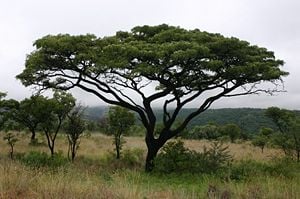
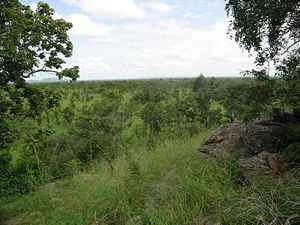
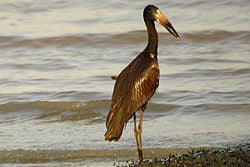
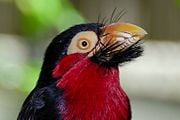
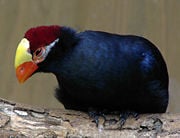
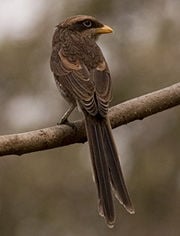
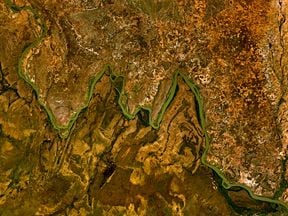


.jpg/120px-Tragelaphus_scriptus_(taxobox).jpg)
